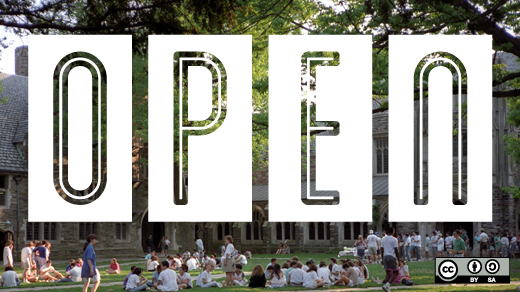Much of the Internet runs Linux and open source software, yet in most of our schools—whether PK-12 or higher education—Linux and open source software are given short shrift.
Linux has made serious inroads on hand-held devices, the desktop, and the Internet of things (IoT) that use platforms such as Raspberry Pi, Galileo, and Arduino. Despite this astounding growth, a relatively small number of secondary and post-secondary schools offer technology training that prepares students for increasingly in-demand technical skills. The growth of the maker movement and the concurrent interest in STEM skills, which include coding and ethical hacking, may provide a much-needed impetus to change this trend.
The problem for most schools is finding the mentors and exemplars of this paradigm. Codecademy and similar online resources provide opportunities for anyone to learn how to code in Python, Java, and other languages, and for students to learn the commandline, which is useful in Linux, MacOS, iOS, and other Unix-like systems. Most schools, however, continue to emphasize competence in proprietary office suites. Experience in word processing, financial analysis, and database management is important, but also can be gained using open source software, such as LibreOffice, which comes free with most Linux distributions.
Penn Manor model
I recently read the draft of a forthcoming book written by Charlie Reisinger of the Penn Manor School District in Lancaster, Pennsylvania. In the book Charlie makes cogent arguments for allowing students to use Linux laptops with "root access," which allows students to be admins and software developers. This approach is considered radical in most PK-12 school districts. He explains:
"Locked-down technology is a symptom of an education system designed for student compliance and defined by the incessant measurement of learning. A factory-like school system values what a student has purportedly learned on a linear path, as demonstrated by a standardized test score. Technology device restraints and restrictions lock students on the assessment assembly line, at the cost of a child's curiosity and intellectual freedom.
As a former IT director and technology teacher at a PK-12 school, I can tell you that providing root access to students would have sent shivers down the spines of most of the IT professionals I worked with. Nonetheless, there are good reasons to give students that kind of access. As Socrates said, "Education is the kindling of a flame, not the filling of a vessel." Letting students fully explore the computers kindles the flame of curiosity. Building, breaking, and rebuilding is part of the learning process.
Penn Manor provides one example other school districts should consider when preparing their students for 21st century careers. The ground has shifted under our schools, yet few are teaching the skill sets necessary for graduates to compete in the workforce they will join. Charlie Reisinger writes:
... the budget is only part of the story. Over time, the principles behind open source reshaped our students’ classroom experiences. The application of open source principles ultimately led to the development of a unique one-to-one learning program, in which we supplied thousands of middle and high school students with an unlocked district laptop running free and open source software exclusively. Our learning efforts culminated with an internationally recognized high school student help desk program built on a foundation of collaboration, community, participation, and trust. We found that open classrooms look more like art studios and makerspaces, and nothing like factories.
Learning is not the result of getting it right first time and every time. Rather, learning is more about figuring out what not to do, which means giving students the tools and the latitude to learn from mistakes. Using open source tools in the classroom levels the playing field, too. Having worked all of my career in a school district where budgets were limited, I am intimately familiar with the need to be frugal. Linux and open source software make that possible, while at the same time giving students and teachers access to better software tools than those that come shrink-wrapped with many of classroom computer systems.
Not every school district has a Charlie Reisinger. Building consensus for change is a slow process, but schools can begin to explore and think more openly about teaching tech skills with open source tools, without needing to factor in big budgets for proprietary solutions. In fact, schools can experiment with old hardware because Linux easily runs on older computers with less RAM and CPU requirements than found in newer models. Live CDs and bootable USB drives also allow teachers and students to explore the wealth of open source software without changing current systems.
In my tenure as a school technology director, my most pressing need was not only finding open source tools that could be used in the classroom, but also finding documentation and models for their use. In this column, I hope to help educators and students who want to fully utilize Linux and open source hardware and software, and open educational resources in the classroom.







6 Comments